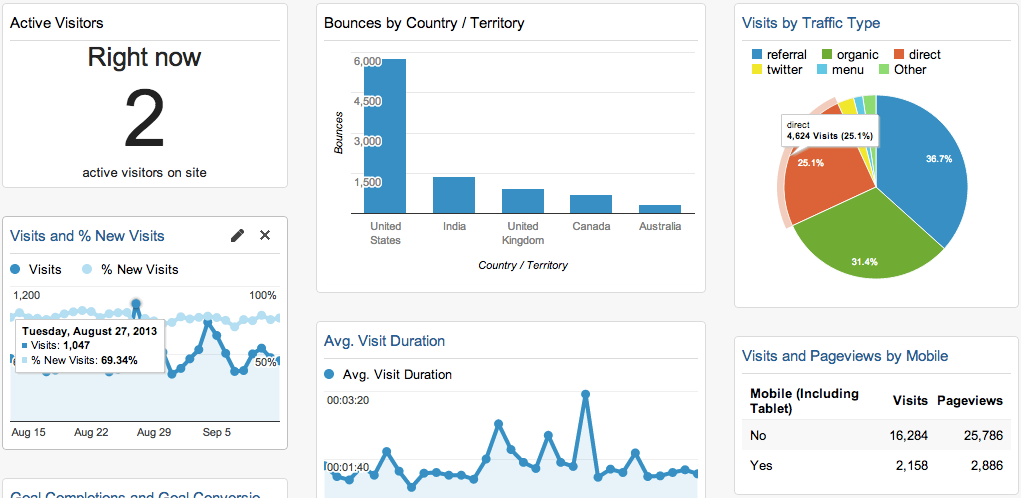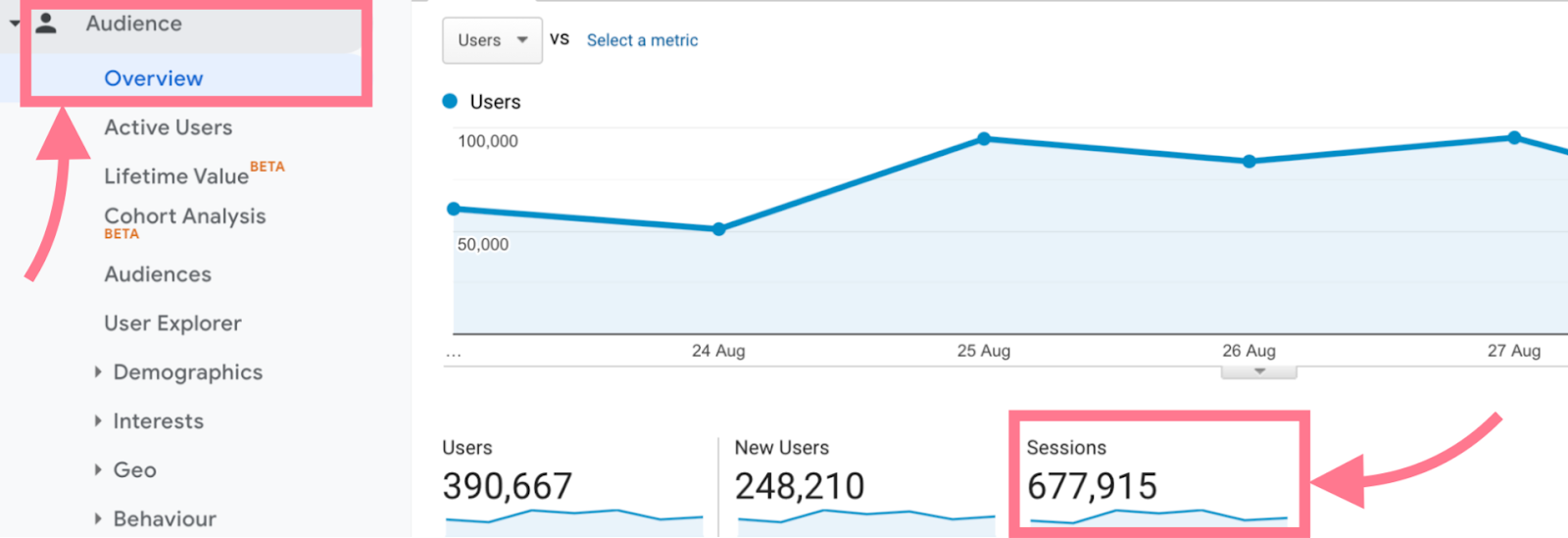Master Site Insights With Accurate Google Analytics Tracking Code
The reliable utilization of Google Analytics pivots on the accurate application of its tracking code, a basic step frequently ignored by site owners. This apparently easy JavaScript bit, when appropriately placed, becomes the backbone of data collection, providing insights right into user actions and website performance. Nevertheless, obstacles can emerge during setup, potentially skewing the data and bring about misinformed decisions. Comprehending these complexities is vital for making best use of the benefits of analytics. What are the usual pitfalls that could undermine your tracking efforts, and exactly how can you ensure accuracy in your strategy?
Comprehending Google Analytics Essentials
Google Analytics is a crucial device for site owners and marketing experts, supplying indispensable understandings right into user habits and site performance. At its core, Google Analytics accumulates information about visitors to a site, permitting users to analyze metrics such as web traffic sources, individual engagement, and conversion prices. Recognizing these principles is important for enhancing an internet site's performance and improving user experience.
The platform employs cookies to track communications, tape-recording data such as web page views, session durations, and bounce prices. This information is accumulated and offered through adjustable control panels, allowing individuals to visualize fads over time. Trick performance indications (KPIs) can be kept an eye on, such as the complete variety of users, new versus returning visitors, and the geographic distribution of the audience.
In Addition, Google Analytics uses division features, enabling individuals to isolate particular website traffic sources or individual demographics for more targeted evaluation. By grasping these foundational components, web site owners can make informed decisions concerning material approach, marketing campaigns, and general site renovations. Inevitably, recognizing Google Analytics basics is necessary for leveraging data to drive development and attain organization objectives properly.
Establishing Up Your Monitoring Code
Duplicate the offered monitoring code and paste it into the HTML of your internet site. This guarantees that the tracking code loads prior to any type of other web content, enabling it to capture information properly.
After installment, validate that the monitoring code is functioning correctly by using Google Tag Assistant or the Real-Time records in Google Analytics - when does the google analytics tracking code send an event hit to analytics?. This step is important to validate that your information collection is accurate and energetic, setting the structure for insightful evaluation
Common Monitoring Code Issues
Numerous website owners come across common issues with their Google Analytics tracking code that can hinder data collection and evaluation. One widespread issue is improper installation. This might occur when the tracking code is positioned in the wrong area of the internet site's HTML, typically causing missing or insufficient information. Furthermore, having several instances of the tracking code on a single page can result in filled with air metrics, as user interactions could be counted more than once.
One more concern occurs from the usage of ad blockers, which can prevent the monitoring code from carrying out completely, therefore skewing data. when does the google analytics tracking code send an event hit to analytics?. In look here addition, failing to configure filters correctly can bring about the exemption of important traffic resources or the inclusion of unwanted reference spam, misshaping the data accumulated
Website proprietors might likewise forget the importance of monitoring code updates, specifically when migrating to Google Analytics 4 (GA4) from Universal Analytics. Lastly, inadequate testing before introducing modifications can cause undetected errors in the tracking code, even more making complex data reliability. Dealing with these usual concerns is vital for making certain exact tracking and informative analytics.
Studying Website Information Successfully
Exact information collection is just the primary step in leveraging Google Analytics; the real worth exists in efficiently analyzing that information to drive enlightened decision-making. To accomplish this, it is vital webpage to recognize crucial performance indications (KPIs) that line up with your business goals. Focus on metrics such as conversion prices, individual involvement, and website traffic resources, as these will offer understandings right into customer behavior and the overall effectiveness of your web site.
Utilizing Google Analytics' segmentation attributes permits for a much deeper understanding of your target market. By breaking down information right into particular demographics, habits, and website traffic channels, you can uncover patterns and patterns that inform targeted strategies. Applying custom-made reports and dashboards can enhance this procedure, enabling quick accessibility to relevant information.
Additionally, regularly reviewing data patterns in time helps to recognize abnormalities and opportunities for improvement. Make use of visualization tools to existing data in a pop over to this web-site quickly absorbable format, helping with a lot more efficient interaction with stakeholders. Ultimately, the ability to evaluate internet site information effectively empowers organizations to make tactical decisions that boost customer experience, maximize advertising and marketing efforts, and drive development.

Best Practices for Accurate Tracking
Carrying out effective monitoring methods is essential for getting trusted data in Google Analytics. To ensure accurate tracking, begin by properly setting up the Google Analytics tracking code on every page of your website. This can be completed with a tag supervisor or by directly embedding the code right into the HTML.
Next, configure your Google Analytics account to omit inner website traffic. This can be done by establishing filters that recognize and get rid of brows through from your organization's IP address, thereby protecting against manipulated data. Additionally, use occasion tracking to monitor details customer communications, such as downloads or video plays, which common page sights may neglect.
Frequently examine your monitoring setup to confirm that all features, such as goals and ecommerce monitoring, are working properly. Establish a constant naming convention for your occasions and campaigns to facilitate much easier coverage and evaluation.
Lastly, take into consideration leveraging UTM criteria for campaigns to get understandings right into the performance of different advertising efforts. By adhering to these best practices, you can enhance the precision of your data collection and analysis, ultimately leading to even more educated decision-making for your internet site.
Verdict
Exact application of the Google Analytics tracking code is necessary for understanding web site understandings. By ensuring the tracking code is correctly positioned and frequently investigated, web site owners can capture important individual communication information, hence facilitating the identification of key efficiency indications. Reliable evaluation of this information, combined with adherence to best practices, enables notified decision-making and the optimization of on the internet approaches. Eventually, a durable tracking framework enhances the capacity to drive interaction and enhance general site performance.

Inadequate testing prior to launching modifications can result in undetected errors in the tracking code, further making complex information dependability.Implementing reliable tracking methods is vital for obtaining trusted information in Google Analytics. By ensuring the monitoring code is appropriately placed and routinely investigated, web site proprietors can catch vital user communication data, thus assisting in the recognition of key performance signs.